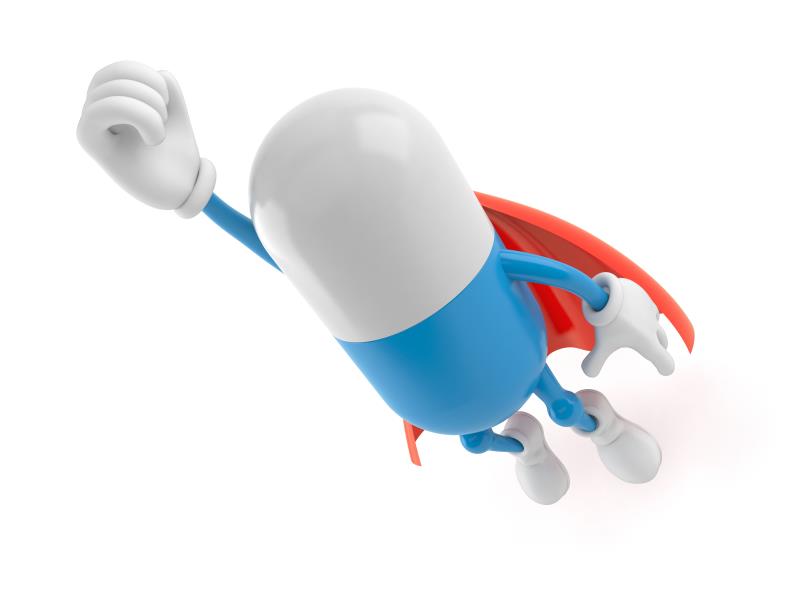Relugolix delivers therapeutic potential for prostate cancer





The phase III HERO trial presented at ASCO20 Virtual demonstrated the superiority of the GnRH* antagonist relugolix over the LHRH** agonist leuprolide for treating advanced prostate cancer (PCa).
LHRH agonists are the mainstay for medical castration in PCa treatment; however, these require injections, have a delayed effect, and cause an initial testosterone surge that might trigger symptom flares***. [Urology 2010;75:642-647] Use of degarelix, the only commercially available GnRH antagonist with proven efficacy, is also limited by the monthly shots required and the associated injection site reactions. [Int J Urol 2012;19:594-601; Cancer Med 2019;8:5891-5902]
“Relugolix is the first oral GnRH receptor antagonist [that] was previously shown to rapidly suppress testosterone levels … [Our findings show that] relugolix achieved castration as early as day 4 and … sustained testosterone suppression through 48 weeks, faster testosterone recovery after discontinuation, and a 54-percent reduction in MACE#,” said the researchers. These underscore the potential of relugolix as a new androgen deprivation therapy (ADT) alternative in men with advanced PCa, they added.
Day 4 saw 56 percent of men on relugolix achieving castrate testosterone levels (mean, 38 ng/dL) as opposed to none with leuprolide (p<0.001). [N Engl J Med 2020;382:2187-2196]
This effect was sustained throughout the treatment period, with 96.7 percent of relugolix recipients achieving and maintaining serum testosterone suppression below castrate levels (<50 ng/dL), against 88.8 percent of those receiving leuprolide. The difference of 7.9 percent signified the superiority of relugolix over leuprolide (p<0.001). This superiority was also seen across all key secondary endpoints## (p<0.001 for all).
These suggest that relugolix may avoid a testosterone surge and the need for anti-androgens to prevent symptom flares, noted the researchers. The rapid testosterone suppression may also be beneficial when considering other antineoplastic interventions (ie, radiation, chemotherapy), they added.
In the testosterone recovery subset (n=184), more relugolix vs leuprolide recipients achieved testosterone recovery (at least 280 ng/dL) 3 months following treatment discontinuation (54 percent vs 3 percent; pnominal=0.002). “[These findings] may have meaningful clinical relevance for men receiving intermittent therapy, those receiving a short course of ADT, … or those who may want to discontinue treatment to recover from a serious and debilitating complication,” they explained.
Favourable cardiovascular safety
Of note was the lower overall incidence of MACE with relugolix vs leuprolide (2.9 percent vs 6.2 percent; hazard ratio, 0.46), which was similarly observed in a subgroup of men with a history of MACE (3.6 percent vs 17.8 percent). “[The subgroup results] indicate that the odds of having an event were 4.8 times as high with leuprolide as with relugolix,” explained the researchers.
These findings are remarkable, considering the increased cardiovascular (CV) event rates tied to leuprolide, they said. About a third of men with PCa have established CV disease, and more have other risk factors###. CV events are the leading cause of death in men with PCa, accounting for about 34 percent of deaths. [Eur Urol 2017;72:920-928; Eur Heart J 2019;40:3889-3897]
This global trial randomized 934 men 2:1 to relugolix 120 mg QD after a single 360-mg loading dose or leuprolide acetate 22.5 mg (11.25 mg in Japan and Taiwan) every 3 months for 48 weeks. Despite treatment adherence issues regarding oral regimens, the rates were >99 percent in both arms. This correlated with reported real-world adherence rates for oral androgen axis-directed therapies for castration-resistant PCa. [Am Health Drug Benefits 2017;10:296-303; J Manag Care Spec Pharm 2014;20:477-484]